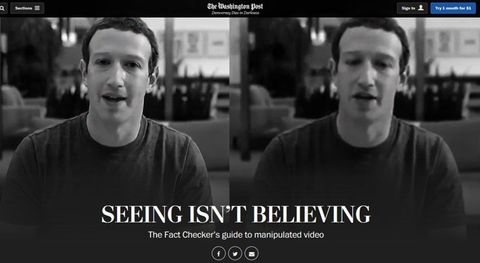Tools to Spot Fakery
A growing number of tools are becoming available to help spot BS and fakery — fake news, fake images, fake profiles, fake reviews, fake followers.
Page Content
Useful Tools
Here are some examples of tools available on the Internet:
Here are some examples of tools available on the Internet:
• Fake Images: Google Images
and TinEye enable you to check the authenticity of images by performing a ‘reverse image search’. It couldn't be easier! Their search engines are constantly crawling the web and adding images to their index. [19]
• Fake Facebook Profiles: FB Checker
offers users a quick way to help determine the authenticity of profiles by examining their photos. (Fake profiles continue to be a problem onFacebook.)
• Fake Twitter Pages: Botometer
(formerly 'BotOrNot') will help find bogus Twitter pages; iIt checks the activity of a Twitter
account and gives it a score based on how likely the account is to be a bot. Higher scores are more bot-like. [There's more about how this works in the video.]
• Fake Reviews: Fakespot.com
— online tool that analyzes Amazon reviews and reviewer accounts for suspicious content, writing styles, dates, and purchasing patterns, before returning a Fakespot grade based on review quality. [see also the Which? guide below.]
• Fake News: B.S. Detector
— this extension for Chrome
and Firefox
Browsers searches pages for links to unreliable domains, checking them against a manually compiled list of domains; it provides visual warnings about the presence of questionable links or the browsing of questionable websites.
• Fake Twitter Followers: Twitter Audit
— allows you to enter any username to find the account’s percentage of real followers. [Twitter Audit says it samples 5,000 of a user’s followers, and determines if these accounts are real or fake based on the number of tweets, date of the last tweet, and ratio of followers to friends. The graphic is the result with Justin Bieber and indicates that 42% of his followers are fake!]
• Stories on Twitter: TwitterTrails — allows members of the media to track the trustworthiness of stories shared on Twitter.
• Fake Instagram Feeds: FollowerCheck
— helps you vet Instagram accounts, and spot fake followers / bogus accounts.
• Automated Live Fact Checking: ClaimBuster — expect to see a lot more of these do-it-yourself fact-checking sites.
• Automated Live Fact Checking: ClaimBuster — expect to see a lot more of these do-it-yourself fact-checking sites.
• Unreliable Sources —
the Iffy Index of Unreliable Sources
"compiles credibility ratings by Media Bias/Fact Check... [the] Index
includes only sites with low MBFC Factual Reporting levels, which 'means the source rarely uses credible sources and is simply not trustworthy for reliable information.'” The IffyNews
website also has a custom Google search engine
that returns search results from dozens of fact-checkers.
On the internet, the above quote is widely identified with Einstein's name; and whilst it represents his sentiment, it is not clear that he actually said it. See for example Quote Inquisitor. Always good to check your quotes!
Spotting Manipulated Videos
In June 2019 The Washington Post
released a new guide
for identifying different kinds of manipulated video — its aim is to help to educate its "readers, fact checkers, and other journalists." The team analysed hours of manipulated footage and identified common elements and features. This includes three general categories (missing context, deceptive editing and malicious transformation) that are further broken down into subcategories. Each category and sub-category is accompanied by a 'real life' example, and a related article providing further details on each case.The authors state that the guide will be updated to reflect the changing landscape of video manipulation.

Spotting Fake Reviews
You can't always trust online customer reviews as there are ways sellers can get around the system. Fake online reviews appear to be by a genuine customer, but may not be a fair representation of their experience.
A seller could give away their product to the reviewer for free, or refund them after a review has been written. They might also pay the person an additional incentive to write a review. In some cases, fake reviews could be entirely fabricated by someone who has never bought, seen or used the product or service. Here's a useful guide from Which?
Is there anything wrong with this page?
If you would like to comment on the content, style, or the choice or use of material on this page, please use the contact form. Thank you!
XXXXXXXX

